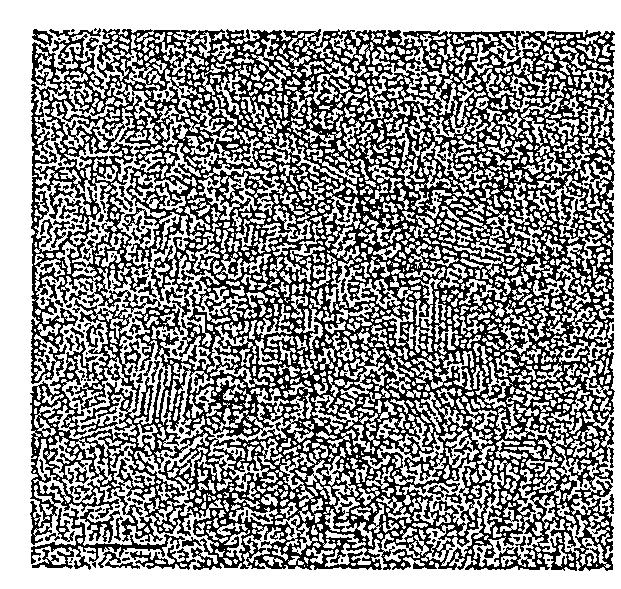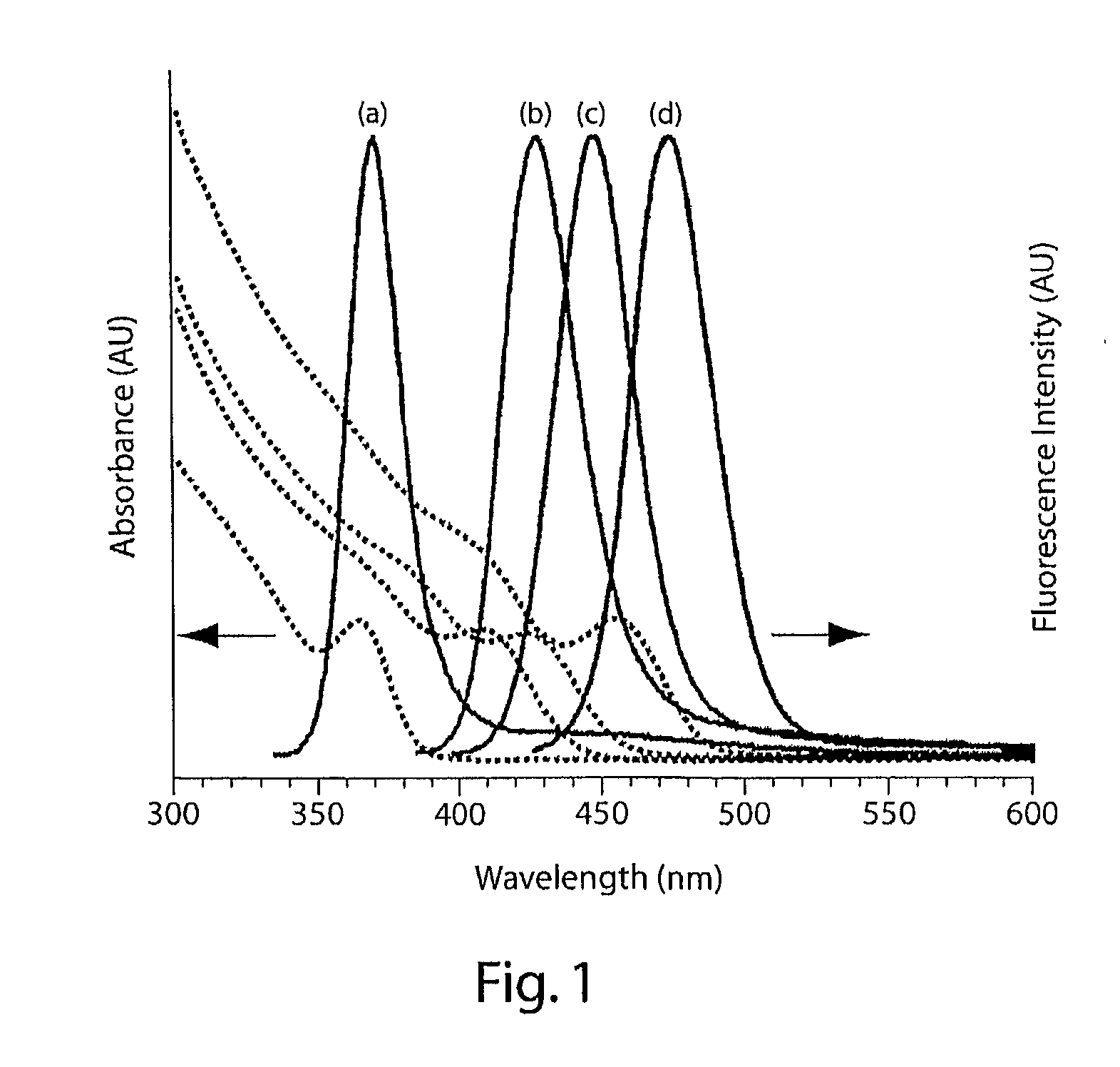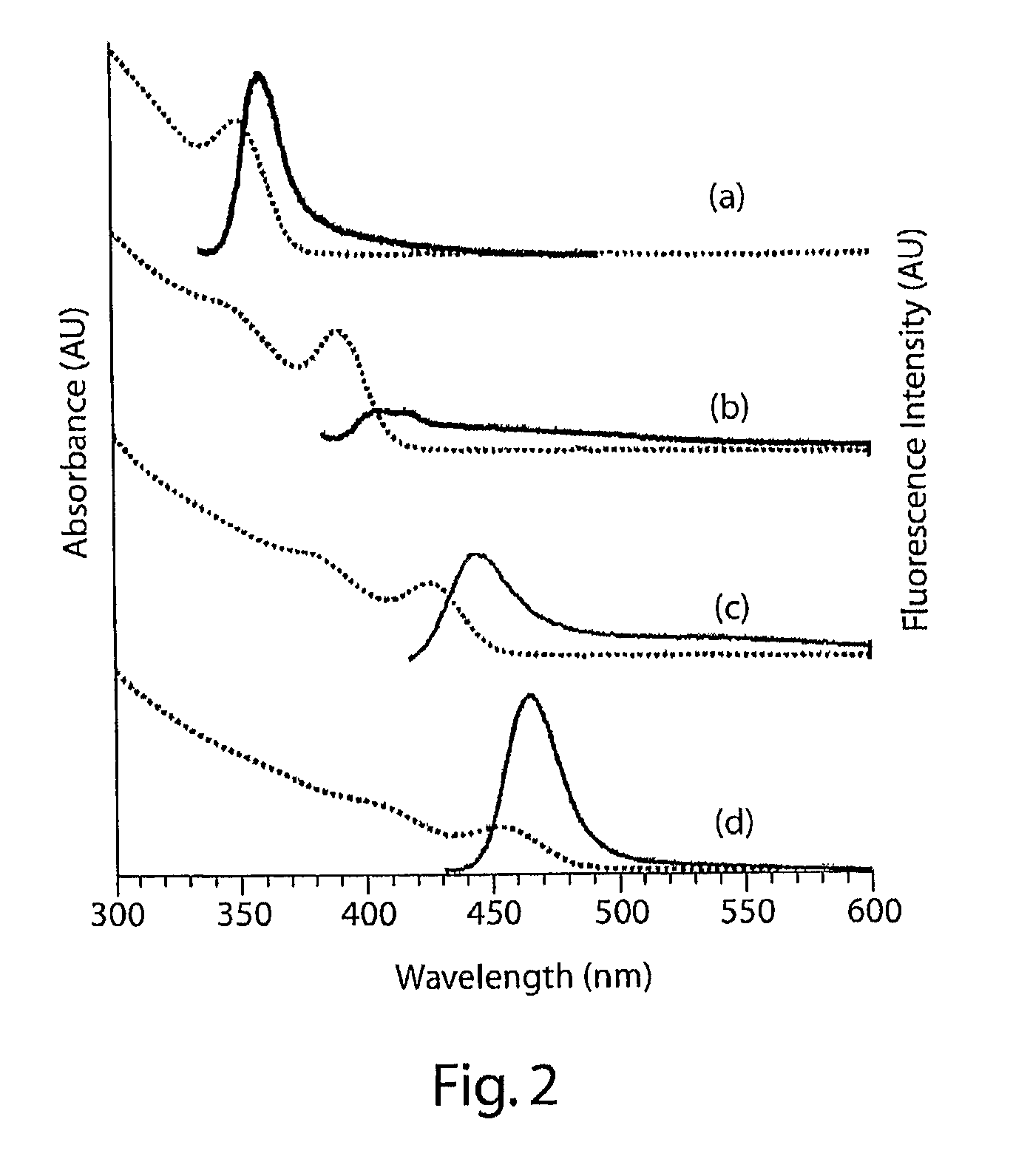Synthesis of Alloyed Nanocrystals in Aqueous or Water-Soluble Solvents
a nanocrystal and solvent technology, applied in the field of nanocrystals, can solve the problems of insufficient long-term stability and insufficient luminescence of these nanocrystals in aqueous or water-soluble solutions
- Summary
- Abstract
- Description
- Claims
- Application Information
AI Technical Summary
Benefits of technology
Problems solved by technology
Method used
Image
Examples
example 1
[0069]This example shows a method of synthesizing glutathione-coated ZnSe nanocrystals in aqueous solution, according to one embodiment of the invention. Chemicals of high purity were purchased from either Lancaster (L-glutathione, sodium hydroxide, zinc chloride, cadmium chloride, 2-propanol) or Sigma-Aldrich (selenium powder (200 mesh), sodium borohydride).
[0070]The synthesis of ZnSe nanocrystals was based on the reaction of zinc chloride and sodium hydroselenide. All the reactions were carried out in oxygen-free water under argon atmosphere. Sodium hydroselenide was prepared by mixing sodium borohydride and selenium powder in water. After selenium powder was completely reduced by NaBH4, the freshly prepared NaHSe solution was added to another solution containing ZnCl2 and glutathione (GSH) at a pH of 11.5 with vigorous stirring. The amounts of Zn, Se and GSH were 5, 2 and 6 mmol, respectively, in a total volume of 500 ml. The resulting mixture was heated to 95° C., and the growth...
example 2
[0074]This example shows a method of synthesizing glutathione-capped ZnxCd1-xSe alloyed nanocrystals in aqueous solution, according to another embodiment of the invention. The ZnxCd1-xSe alloyed nanocrystals were prepared through the incorporation of cadmium ions into the ZnSe precursor nanocrystals. After 30 min of heating at 95° C., the fluorescence emission of the as-prepared ZnSe precursor nanocrystals was 360 nm. CdCl2 (1-7 mmol) pre-mixed with an equivalent amount of GSH was added dropwise to the ZnSe nanocrystals precursor solution. The solution pH was then adjusted to 11.5 with an appropriate amount of 1 M NaOH solution. After heating at 95° C. for 4 h, the resulting ZnxCd1-xSe alloyed nanocrystals were precipitated with a minimal amount of 2-propanol, followed by resuspension in a minimal amount of deionized water. Excess salts were removed by repeating this procedure five times, and the purified nanocrystals were vacuum-dried to a powder form.
[0075]To control the Cd mole f...
PUM
| Property | Measurement | Unit |
|---|---|---|
| temperature | aaaaa | aaaaa |
| thickness | aaaaa | aaaaa |
| temperature | aaaaa | aaaaa |
Abstract
Description
Claims
Application Information
 Login to View More
Login to View More - R&D
- Intellectual Property
- Life Sciences
- Materials
- Tech Scout
- Unparalleled Data Quality
- Higher Quality Content
- 60% Fewer Hallucinations
Browse by: Latest US Patents, China's latest patents, Technical Efficacy Thesaurus, Application Domain, Technology Topic, Popular Technical Reports.
© 2025 PatSnap. All rights reserved.Legal|Privacy policy|Modern Slavery Act Transparency Statement|Sitemap|About US| Contact US: help@patsnap.com



